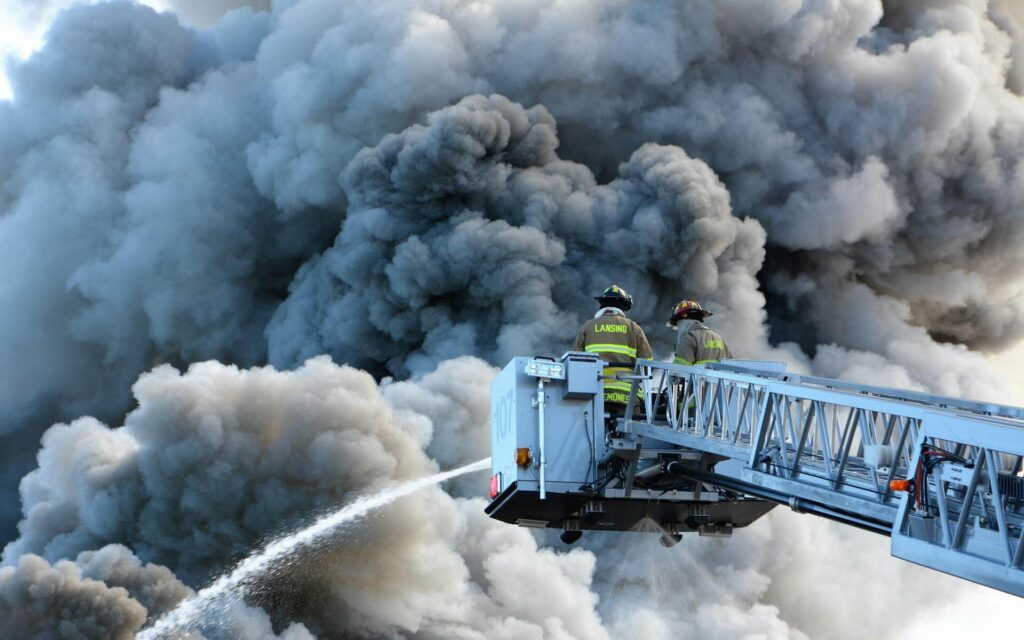Psychological Trauma and Resilience in Disaster Scenarios
Disasters, whether triggered by natural forces like earthquakes, hurricanes, and floods, or by human actions such as wars, terrorist attacks, and industrial accidents, are catastrophic events that rip through the fabric of life, leaving behind a wake of physical devastation and profound psychological scars. The sudden, often violent, and overwhelming nature of these events can inflict deep and lasting trauma, affecting individuals, families, and entire communities. Understanding the intricate interplay of psychological trauma and resilience in disaster scenarios is not merely an academic exercise; it is a critical imperative for providing effective support, fostering long-term recovery, and building more resilient societies.

The Anatomy of Psychological Trauma in Disasters
Psychological trauma in the context of disasters transcends the realm of mere distress; it is an existential crisis, a shattering of the fundamental assumptions about safety, security, and predictability. It is the overwhelming sense of helplessness and terror that accompanies exposure to life-threatening events, the feeling of being utterly powerless in the face of forces beyond one’s control. This trauma can manifest in a multitude of forms, each with its own unique set of symptoms and challenges:
- Acute Stress Disorder (ASD): This is an immediate and intense reaction that surfaces within a month of the traumatic event. It is characterized by intrusive thoughts, vivid flashbacks, recurring nightmares, emotional numbing, a detached sense of reality, and a state of hypervigilance. The individual may feel as if they are reliving the event, trapped in a loop of terror.
- Post-Traumatic Stress Disorder (PTSD): If the symptoms of ASD persist beyond a month and begin to significantly impede daily functioning, a diagnosis of PTSD may be warranted. PTSD is a chronic condition characterized by persistent re-experiencing of the trauma through intrusive memories, flashbacks, and nightmares, relentless avoidance of triggers that evoke memories of the event, negative alterations in mood and cognition, and a state of heightened arousal, leading to irritability, difficulty sleeping, and exaggerated startle responses.
- Complex PTSD (C-PTSD): This develops from prolonged or repeated exposure to traumatic events, often in situations where escape is impossible or difficult, such as domestic violence, childhood abuse, or captivity. C-PTSD can lead to profound difficulties with emotional regulation, persistent challenges in interpersonal relationships, a distorted and negative self-perception, and a chronic sense of shame and guilt.
- Grief and Loss: Disasters often involve the loss of loved ones, homes, and cherished possessions. This can trigger intense and prolonged grief, a complex and multifaceted emotional response that can compound the effects of trauma. The grieving process can be complicated by the sudden and violent nature of the loss, the lack of closure, and the disruption of social support systems.
- Anxiety and Depression: The pervasive uncertainty and instability that follow a disaster can lead to pervasive anxiety and depression. Anxiety can manifest as persistent worry, fear, and panic attacks, while depression can lead to feelings of hopelessness, despair, and a loss of interest in life.
- Vicarious Trauma: Even those who are not directly affected by a disaster can experience trauma by witnessing or hearing about the suffering of others. This is particularly true for first responders, aid workers, and mental health professionals who are exposed to the graphic details of traumatic events.
The Multifaceted Factors Influencing Psychological Trauma
The severity and nature of psychological trauma vary significantly depending on a complex interplay of factors:
- Exposure to the Disaster: Direct exposure to the event, witnessing it firsthand, or learning about it happening to loved ones significantly increases the risk of developing trauma-related disorders. The closer the proximity to the event, the greater the potential for trauma.
- Pre-existing Mental Health Conditions: Individuals with pre-existing mental health conditions, such as anxiety disorders, depression, orPTSD, are more vulnerable to developing trauma-related disorders following a disaster. Their pre-existing vulnerabilities can be exacerbated by the stress of the event.
- Social Support: Strong social support networks can act as a buffer against the impact of trauma. Supportive relationships provide a sense of belonging, emotional support, and practical assistance, which can help individuals cope with the aftermath of a disaster.
- Age and Developmental Stage: Children and older adults may have unique vulnerabilities to trauma. Children may lack the cognitive and emotional resources to process traumatic experiences, while older adults may face increased vulnerability due to physical health problems, social isolation, and cognitive decline.
- Cultural Background: Cultural beliefs, values, and practices can significantly influence how individuals perceive and cope with trauma. Cultural factors can shape the way individuals express their emotions, seek help, and interpret their experiences.
- The Nature of the Disaster: Sudden, violent, and prolonged disasters are more likely to create severe and lasting trauma. The unpredictability and uncontrollability of these events can shatter the sense of safety and security.
The Power of Resilience: Bouncing Back from Adversity
Resilience is not merely the absence of trauma; it is the dynamic process of adapting positively in the face of adversity. It is the ability to bounce back from trauma, to find strength in the midst of suffering, and to emerge from the darkness with renewed hope and purpose. Key aspects of resilience include:
- Healthy Coping Mechanisms: Individuals who possess healthy coping strategies, such as problem-solving skills, emotional regulation techniques, and self-care practices, are better equipped to navigate the challenges of trauma.
- Sense of Control: Feeling a sense of control over one’s life, even in the midst of chaos, can promote resilience. This sense of control can be fostered by engaging in activities that provide a sense of mastery and autonomy.
- Optimism and Hope: Maintaining a positive outlook and believing in the possibility of recovery can foster resilience. Hope provides a sense of direction and purpose, while optimism helps individuals to see the light at the end of the tunnel.
- Strong Social Connectedness: Strong social bonds provide a sense of belonging, emotional support, and practical assistance, which are crucial for resilience. Social connectedness can help individuals feel less alone and more supported during difficult times.
- Meaning and Purpose: Finding meaning in the experience and having a sense of purpose can help individuals move forward after trauma. This sense of meaning and purpose can provide a sense of direction and motivation for recovery.
Cultivating Resilience in Disaster Scenarios
Promoting resilience requires a multi-faceted and holistic approach that addresses the diverse needs of affected populations:
- Early Intervention: Providing immediate psychological support after a disaster can prevent the development of long-term trauma-related disorders. Psychological first aid, crisis counseling, and other early intervention strategies can help individuals process their experiences and develop coping skills.
- Community-Based Programs: Programs that foster social support, promote coping skills, and address community needs can enhance resilience. These programs can provide a sense of belonging, reduce social isolation, and empower individuals to take control of their lives.
- Education and Awareness: Educating individuals and communities about trauma and resilience can help reduce stigma, promote help-seeking behavior, and empower individuals to take proactive steps to protect their mental health.
- Cultural Sensitivity: Tailoring interventions to the specific cultural context of the affected population is essential. Cultural competence ensures that services are relevant, accessible, and acceptable to diverse communities.
- Long-Term Support: Providing ongoing support and resources is essential for long-term recovery. Trauma recovery is a process, not an event, and individuals may need ongoing support to maintain their mental health and well-being.
Psychological trauma is an inevitable consequence of disasters, but resilience is a powerful force that can help individuals and communities recover. By understanding the complexities of trauma and promoting resilience, we can create more supportive, compassionate, and resilient societies.

Free consultations. Connect free with local health professionals near you.
Mental Health: Disaster Aftermath and Recovery Strategies
The aftermath of a disaster is a critical period that demands focused attention on the mental health needs of affected populations. The psychological toll of disasters can be profound, long-lasting, and far-reaching, requiring comprehensive, culturally sensitive, and evidence-based recovery strategies that address the full spectrum of mental health challenges. This article delves into the intricate landscape of mental health in disaster aftermath and outlines effective recovery strategies that can promote healing, resilience, and long-term well-being.
The Complex Landscape of Mental Health in Disaster Aftermath
Disasters create a unique and challenging mental health landscape, characterized by a surge in acute stress reactions, followed by a gradual unfolding of more complex and enduring mental health issues. The recovery process is not linear; it is a complex and dynamic journey that requires ongoing support and intervention.
- Immediate Post-Disaster Phase: This phase is marked by shock, disbelief, and heightened emotional distress. Individuals may experience anxiety, fear, confusion, and difficulty sleeping. The immediate need is for safety, security, and basic necessities.
Conclusion
The seismic shifts caused by disasters, whether natural or human-made, leave indelible marks on the human psyche. Beyond the physical destruction, the lingering shadow of psychological trauma casts a long pall, demanding a concerted and compassionate response. It is within this crucible of adversity that the true test of our humanity lies: our ability to foster healing, nurture resilience, and rebuild not just structures, but lives.
The articles explored the intricate tapestry of psychological trauma, revealing its multifaceted nature, from the immediate shock of Acute Stress Disorder to the enduring challenges of Post-Traumatic Stress Disorder and Complex PTSD. We have seen how grief, anxiety, and depression intertwine, compounding the burden on individuals and communities already reeling from loss. Crucially, we’ve acknowledged the vulnerability of specific populations—children, the elderly, those with pre-existing conditions, and first responders—who often bear a disproportionate share of the psychological weight.
Yet, amidst this landscape of suffering, the concept of resilience emerges as a beacon of hope. Resilience is not about denying the pain or erasing the trauma; it’s about harnessing inner strength, fostering healthy coping mechanisms, and finding meaning in the midst of chaos. It’s about recognizing that even in the face of overwhelming adversity, the human spirit possesses a remarkable capacity for adaptation and growth.
Building resilience is a multi-layered endeavor, requiring a holistic approach that addresses the diverse needs of affected populations. Early intervention, through Psychological First Aid and crisis counseling, provides immediate support, preventing the escalation of trauma. Community-based programs foster social cohesion, offering a sense of belonging and mutual support. Education and awareness initiatives dismantle stigma, encouraging help-seeking behavior.
Furthermore, evidence-based therapies, such as Cognitive Behavioral Therapy and Eye Movement Desensitization and Reprocessing, offer pathways to healing for those grappling with trauma-related disorders. The importance of cultural competence cannot be overstated; recovery strategies must be tailored to the specific beliefs, values, and practices of diverse communities. Long-term mental health care, addressing the ongoing needs of survivors, is paramount.
The role of social support cannot be underestimated. Strong social networks provide emotional sustenance, practical assistance, and a sense of belonging, which are crucial for recovery. Community initiatives that promote mutual aid and social connection strengthen the collective resilience of affected populations.
Ultimately, the journey toward healing and resilience is a collective endeavor. It demands a sustained commitment from governments, organizations, and individuals to prioritize mental health in disaster response and recovery efforts. It requires fostering a culture of empathy, understanding, and support, where survivors feel safe to share their experiences and seek help.
As we navigate the ever-increasing complexities of our world, marked by climate change and social instability, the lessons learned from disaster recovery become ever more relevant. By investing in mental health infrastructure, training professionals, and empowering communities, we can build more resilient societies, capable of weathering the storms of adversity and emerging stronger, more compassionate, and more connected.
In the wake of disaster, despair may seem insurmountable. But within the human spirit lies an enduring capacity for hope and renewal. By embracing the principles of resilience and implementing effective recovery strategies, we can forge a path toward healing, empowering individuals and communities to rebuild their lives and reclaim their futures.
Time to feel better. Find a mental, physical health expert that works for you.
Common FAQs:
What are the most common mental health problems after a disaster?
Common mental health problems include Acute Stress Disorder (ASD), Post-Traumatic Stress Disorder (PTSD), anxiety disorders, depression, grief, and substance use disorders.
How long does it take to recover from the psychological effects of a disaster?
Recovery is a highly individual process. Some people may begin to feel better within a few weeks, while others may require months or even years of support. There is no set timeline.
What are the signs of PTSD after a disaster?
Signs of PTSD include recurring intrusive thoughts or flashbacks, nightmares, avoidance of places or things that remind you of the event, hypervigilance, irritability, and difficulty concentrating.
How can I help someone who is struggling emotionally after a disaster?
Listen empathetically, offer practical support, encourage them to seek professional help, and respect their need for space and time. Avoid minimizing their feelings.
What is Psychological First Aid (PFA), and how does it help?
PFA is an immediate and compassionate response that aims to reduce distress, promote safety, and connect individuals with resources. It focuses on providing comfort and support, not therapy.
Is it normal to feel anxious or scared after a disaster?
Yes, it is completely normal to experience a range of intense emotions, including anxiety, fear, sadness, and anger, after a traumatic event.
How can I build resilience in myself and my family after a disaster?
Build resilience by maintaining social connections, practicing healthy coping mechanisms, seeking support, focusing on self-care, and finding ways to contribute to your community.
When should I seek professional mental health help?
Seek professional help if you are experiencing persistent symptoms that interfere with your daily life, such as severe anxiety, depression, or thoughts of self-harm.
Are children more vulnerable to psychological trauma after disasters?
Yes, children are often more vulnerable due to their developmental stage and limited coping skills. They may exhibit different symptoms than adults.
What role does community support play in disaster recovery?
Community support is essential for recovery. It provides a sense of belonging, reduces isolation, and facilitates access to resources and mutual aid.
How can I cope with grief after losing a loved one in a disaster?
Grief is a natural process. Allow yourself to feel your emotions, seek support from family and friends, consider joining a support group, and seek professional help if needed.
What are some effective therapies for trauma-related disorders?
Effective therapies include Cognitive Behavioral Therapy (CBT), Eye Movement Desensitization and Reprocessing (EMDR), and trauma-focused therapies.
How can I support first responders and aid workers who are experiencing vicarious trauma?
Provide them with access to mental health support, encourage them to prioritize self-care, and create a supportive work environment.
Are there cultural differences in how people cope with disasters?
Yes, cultural beliefs and practices can significantly influence how individuals perceive and cope with trauma. Recovery strategies must be culturally sensitive.
Where can I find mental health resources after a disaster?
Contact local mental health agencies, community organizations, national disaster relief organizations, and online resources provided by mental health professionals.
NOTICE TO USERS
MindBodyToday is not intended to be a substitute for professional advice, diagnosis, medical treatment, or therapy. Always seek the advice of your physician or qualified mental health provider with any questions you may have regarding any mental health symptom or medical condition. Never disregard professional psychological or medical advice nor delay in seeking professional advice or treatment because of something you have read on MindBodyToday.
Share this article

Let us know about your needs so we can answer any of your questions.

Fast and easy to understand quote

We come fully prepared.Hire when ready.
Popular Professionals Near You
You might also like
Emotional Intelligence
, What is Emotional Intelligence? Everything you need to know Find a Pro Emotional Intelligence: Origins The ascent of emotional […]
All About Emotional Contagion
, All About Emotional Contagion FIND LICENSE A PROFESSION Emotional Resonance in Relationships Emotional resonance, a profound and often subconscious […]
All About Emotional Abuse
, All About Emotional Abuse Find a license Pro Recognizing and Overcoming Emotional Abuse Emotional abuse, a silent epidemic, infiltrates […]





